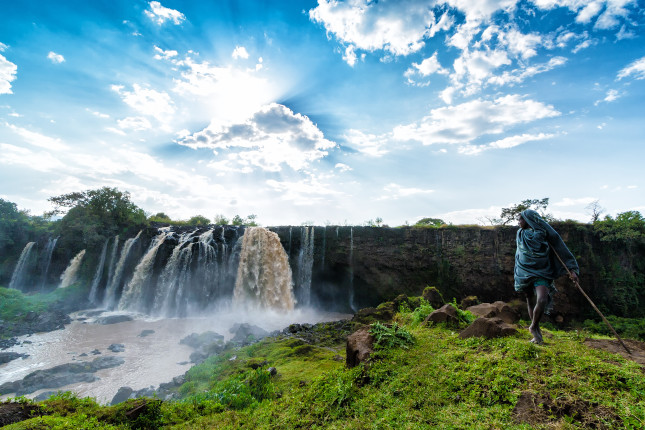-
Tensions Surrounding the Grand Ethiopian Renaissance Dam: A Wilson Center NOW Interview with Aaron Salzberg
August 28, 2020 By Amanda King
Dams can be a double-edged sword, said Aaron Salzberg, a Wilson Center Global Fellow, Director of the Water Institute at the University of North Carolina, and former Special Coordinator for Water Resources for the U.S. Department of State. He spoke in a recent episode of Wilson NOW about the Grand Ethiopian Renaissance Dam, which will become Africa’s largest hydroelectric dam, once it’s fully operational.
The dam project, begun in 2011, will impact not only Ethiopia’s economy and environment, but also its relationships with downstream Nile River neighbors, Egypt and Sudan.
Fully funded by the Ethiopian government, the project’s primary purpose is to provide power and revenue for the Ethiopian people, said Salzberg. About 50 percent of the population lack access to regular energy services right now. “So the dam is intended to double energy production within Ethiopia,” he said, “and to help expand service to the Ethiopian people.”
While dams are critically important pieces of infrastructure for making sure you’ve got water for agriculture and for generating clean energy, at the same time, they can have profound downstream impacts on the environment and on livelihoods, said Salzberg. How the dam is managed and how flows are regulated can affect water conditions downstream. Sudan, for example, may be able to increase agricultural production. But that could take some water out of the system, which could then affect Egypt.
“You can do dams well,” he said. There are procedures for building and operating dams that can mitigate some of the downstream impacts. “The key is to really look at the science, look at the hydrology, and make sure that you’re building and operating the structure in the best way possible to get what you can out of the water so that you don’t create some of those downstream harms.”
There are ways in which the global community wants to see the dam become a success, said Salzberg. These include bringing power to the Ethiopian people, water storage to provide water resources to downstream countries in times of drought, and creating a platform where these countries can regularly engage with each other to solve complicated problems. “That process in and of itself has tremendous benefits to peace and security across the Horn of Africa,” he said. “This is one of the poorest, most conflict-prone regions of the world. If we can get them working together on how they manage this basin in a thoughtful cooperative way, you can really set a new tone for how you deal with security issues across the Horn.”
As the dam begins to fill, Ethiopia, Sudan, and Egypt have yet to reach an agreement over the Nile River’s water resources. The United States attempted to broker negotiations. Egypt presented its case to the UN Security Council, and the African Union has stepped in to mediate the dispute. “There really is no binding international law that countries like Egypt, Ethiopia, and many others are parties to,” said Salzberg. What’s more, if you’re in a downstream country, you don’t have much negotiating leverage. “This is just a very rough time,” he said, “for downstream countries in places in the world where they’ve got an upstream country that’s ready to develop.”
Photo Credit: Shutterstock.com, All Rights Reserved.
Topics: conflict, cooperation, Egypt, Ethiopia, From the Wilson Center, hydropower, Infrastructure, Sudan, water, water security
 A Publication of the Stimson Center.
A Publication of the Stimson Center.






